One of my fondest travel memories of the recent past was of the days, in May 2008, that I spent in the Middle Eastern country of Syria. Like a lot of people around the world, I’ve been following, as best I can & with an overbearing sense of ruefulness, the seemingly never-ending civil war that is presently ravaging the country, the site of some of the world’s most ancient centres of civilization. The lamentable destruction of the Syrian city of Homs was brought home to me by a BBC News website slideshow, entitled Syrian troops in devastated Khalidiya, which shows the utter destruction brought upon a neighbourhood in the city. While Homs is not a city I visited on my trip, I can only imagine the destruction is similar in places I did visit, namely Damascus, Hama & Aleppo.
Aleppo
Aleppo is Syria’s largest city, although not the capital. Having been inhabited since perhaps as early as the 6th millennium BC, it is one of the oldest continuously inhabited cities in the world, an ancient trading city steeped in history sitting as it does at the western end of the old Silk Road. Today most of it lies in ruin.
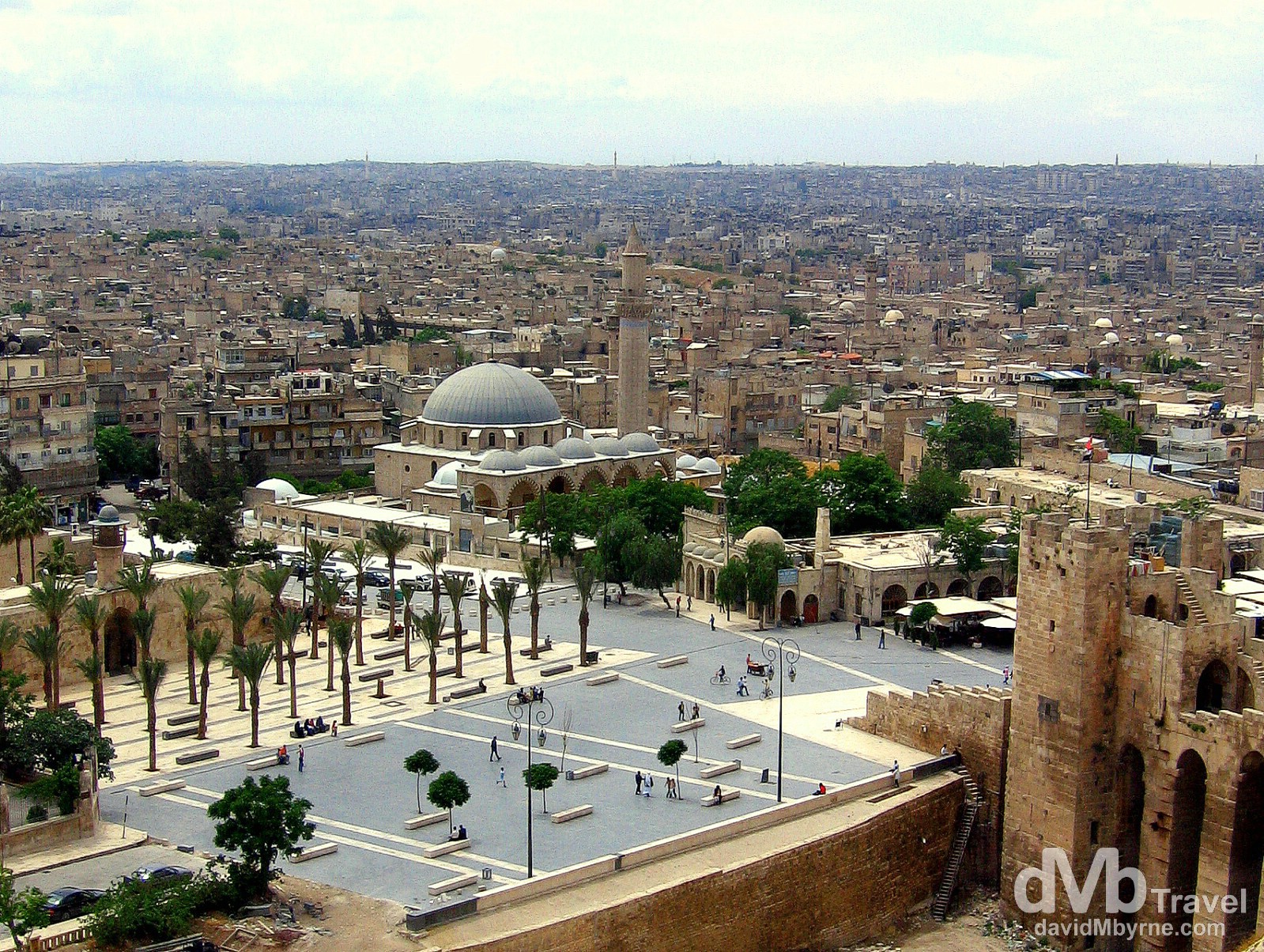
The Syrian city of Aleppo as seen from the walls of the city’s fort. Aleppo, Syria. May 9, 2008.
Alleppo’s medieval fortress, from where I captured the above picture, offers great views over the ancient city. It – the fortress – was built on top of several previous structures & in 2009 was found to contain a 5,000-year-old temple. Fighting is said to have destroyed much of what remained of the fortress, including the medieval iron gates.
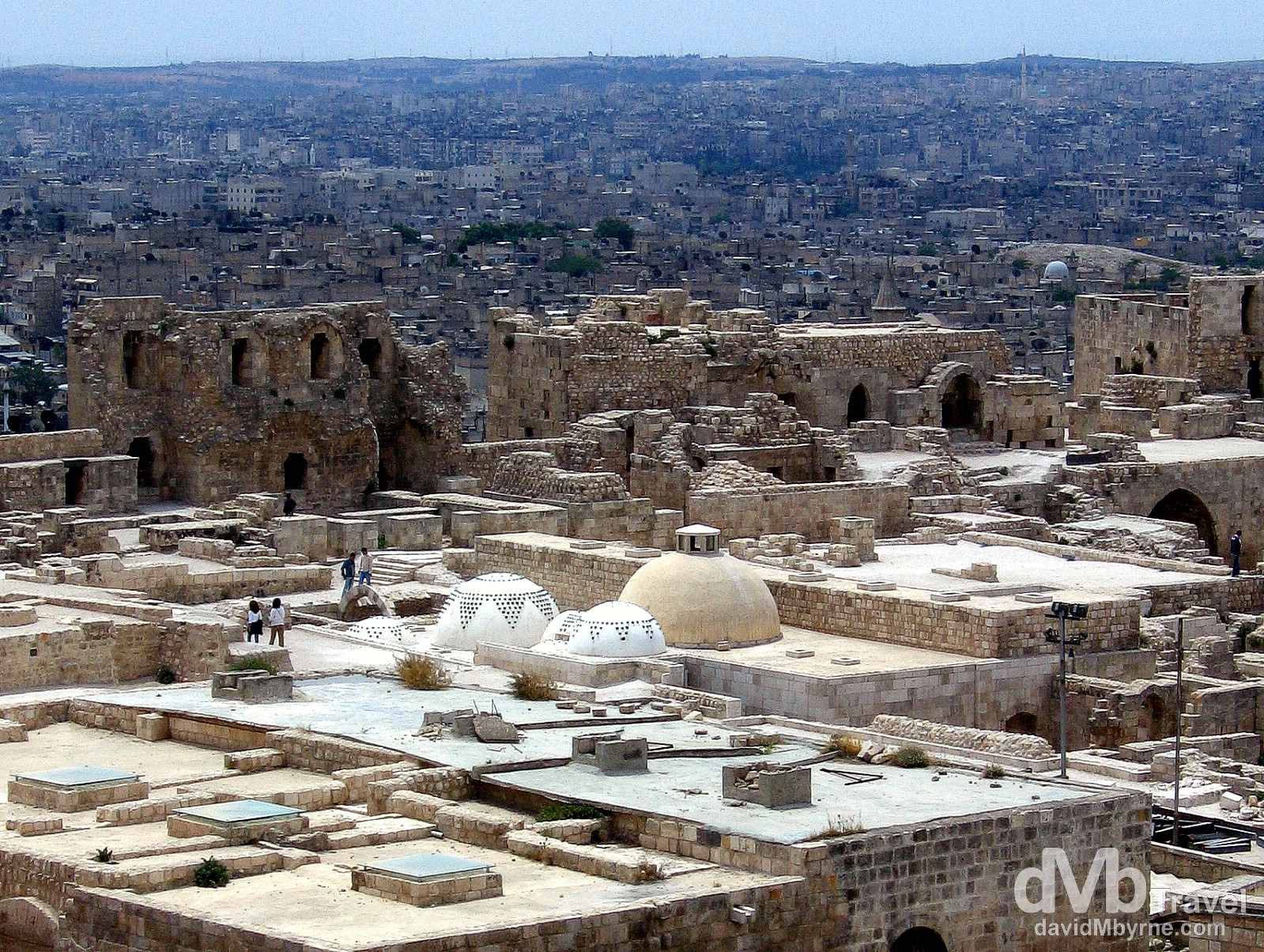
A section of the interior of the fortress in Aleppo, Syria. May 9, 2008.
Al-Madina Souq
A souq is a market in any Arabized or Muslim city & when I visited Aleppo’s UNESCO World Heritage-listed Al-Madina souq, a fascinating & atmospheric 8 mile labyrinth of covered medieval lanes selling all manner of produce, it was a Friday, the Muslim day of rest. It was quiet & walking the lanes was an eerie experience, one I remember fondly.
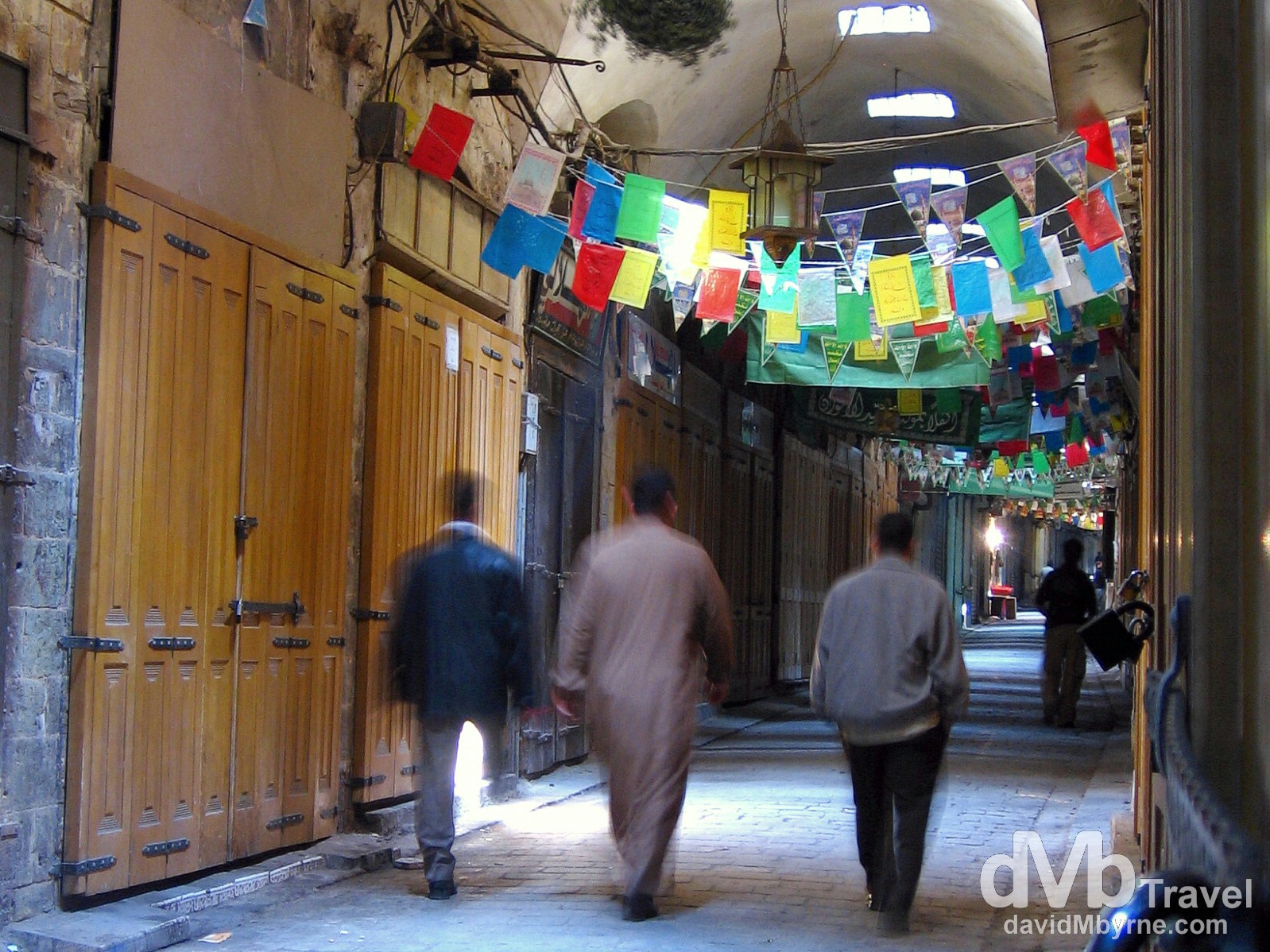
Walking in an empty section of Al-Madina souq in Aleppo, Syria. May 9, 2008.
Sadly the centuries-old al-Medina souq was destroyed by fire resulting from the fighting in early October last year (2012). Kevin Rushby, in this article for theGuardian.com, sums up the travesty of this loss perfectly:
Crac des Chevaliers
Originally built in 1031, Krac des Chevaliers, transliterated Crac des Chevaliers, was a Crusader fortress that was said to be one of the most important preserved medieval military castles in the world.
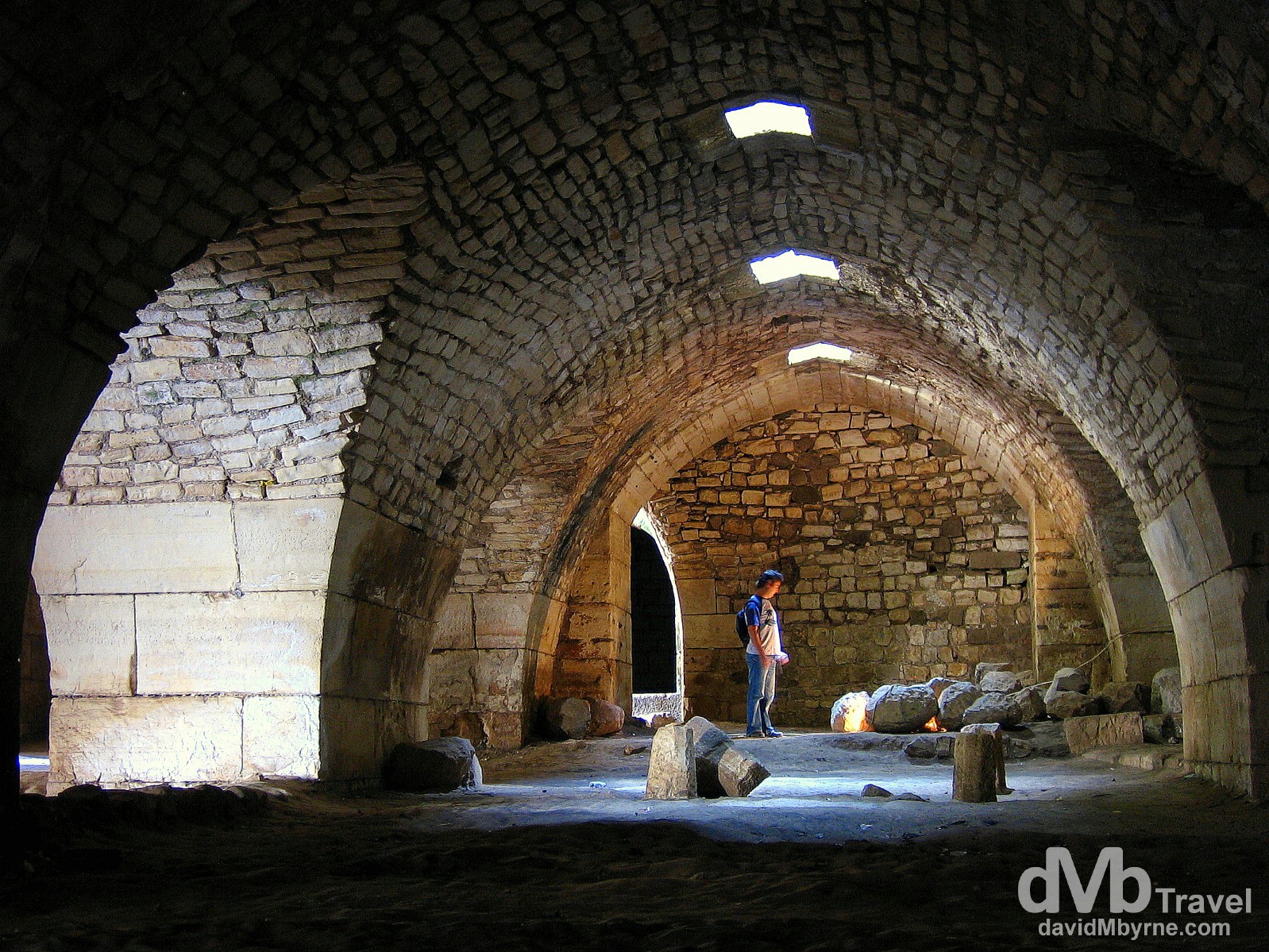
Inside one of the cavernous corridors of the old Crusader castle Crac des Chevaliers in Syria. May 7, 2008.
The castle is located east of Tartus, Syria, in the Homs Gap, atop a 650 metre-high hill along the only route from Antioch, a town in southern Turkey but which was once an ancient commercial centre and capital of Syria, to Beirut and the Mediterranean Sea. It is one of many fortresses that were part of a defensive network along the border of the old Crusader states (present-day Greece, Turkey and Israel & the Palestinian Territories). In peacetime it was one of the country’s most visited attractions, but today reports say artillery fire & fighting have taken its toll & the fortress’ church, with its unique 12th-century Crusader graffiti, has been damaged.
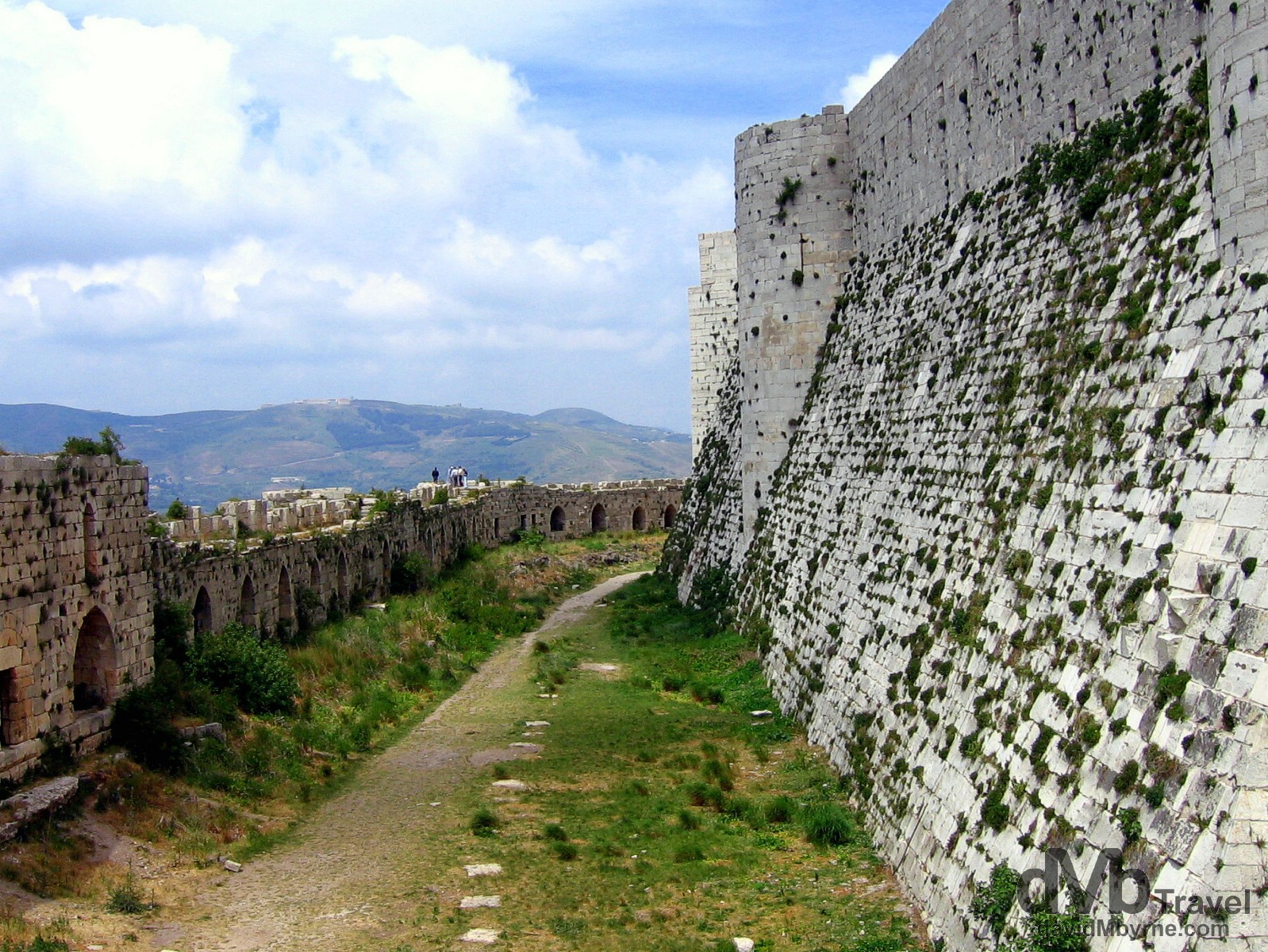
A section of the external wall of the Crusader castle Crac des Chevaliers in Syria. May 7, 2008.
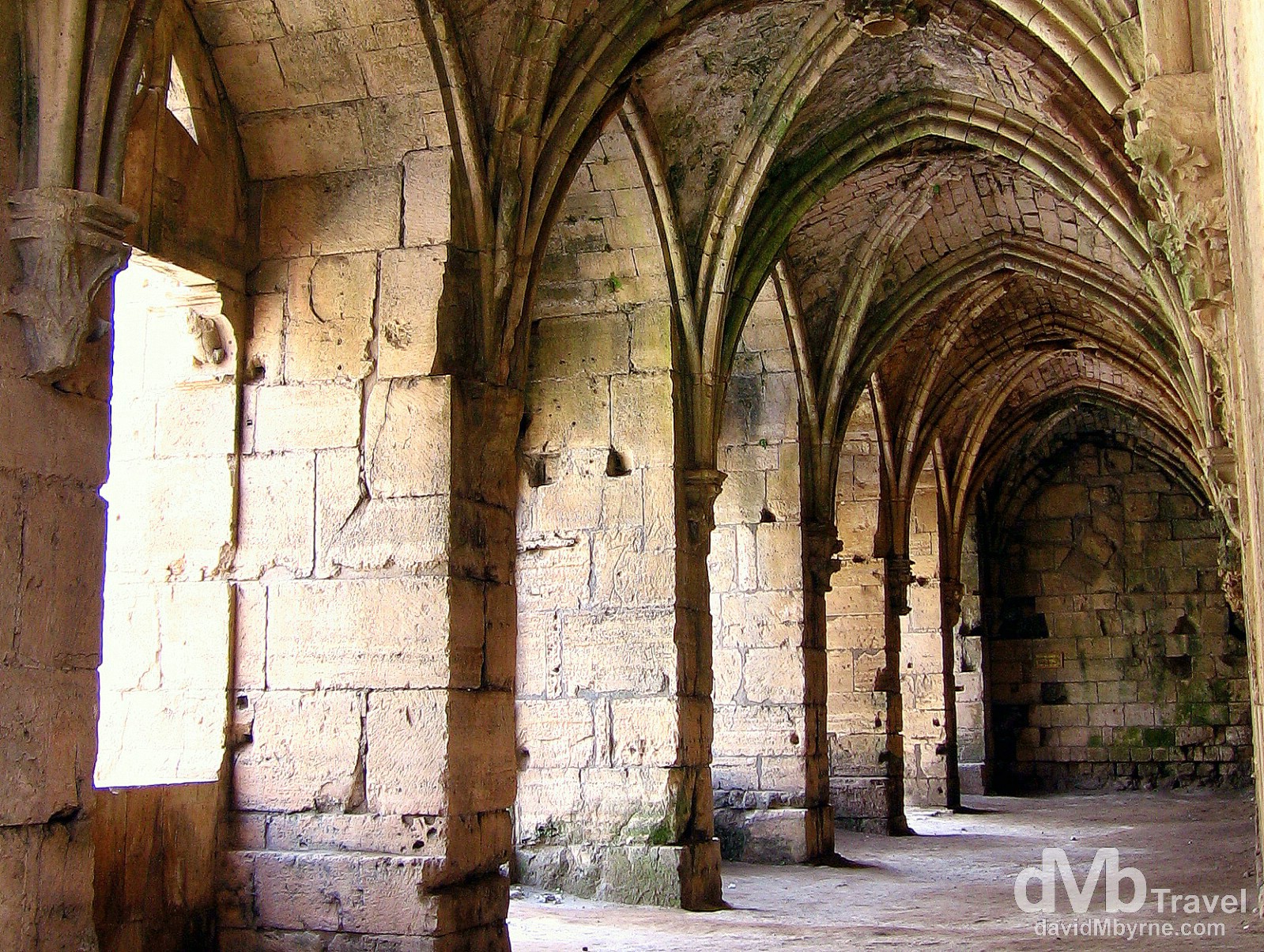
A section of the interior of the old Crusader castle Crac des Chevaliers in Syria. May 7, 2008.
Hama
Hama, the fifth-largest city in Syria, is renowned for its 17 norias which line the Orontes river. The huge wooden wheels were used, it is claimed, since 1100 BC for the purpose of irrigation, but today the norias only serve an aesthetic purpose.
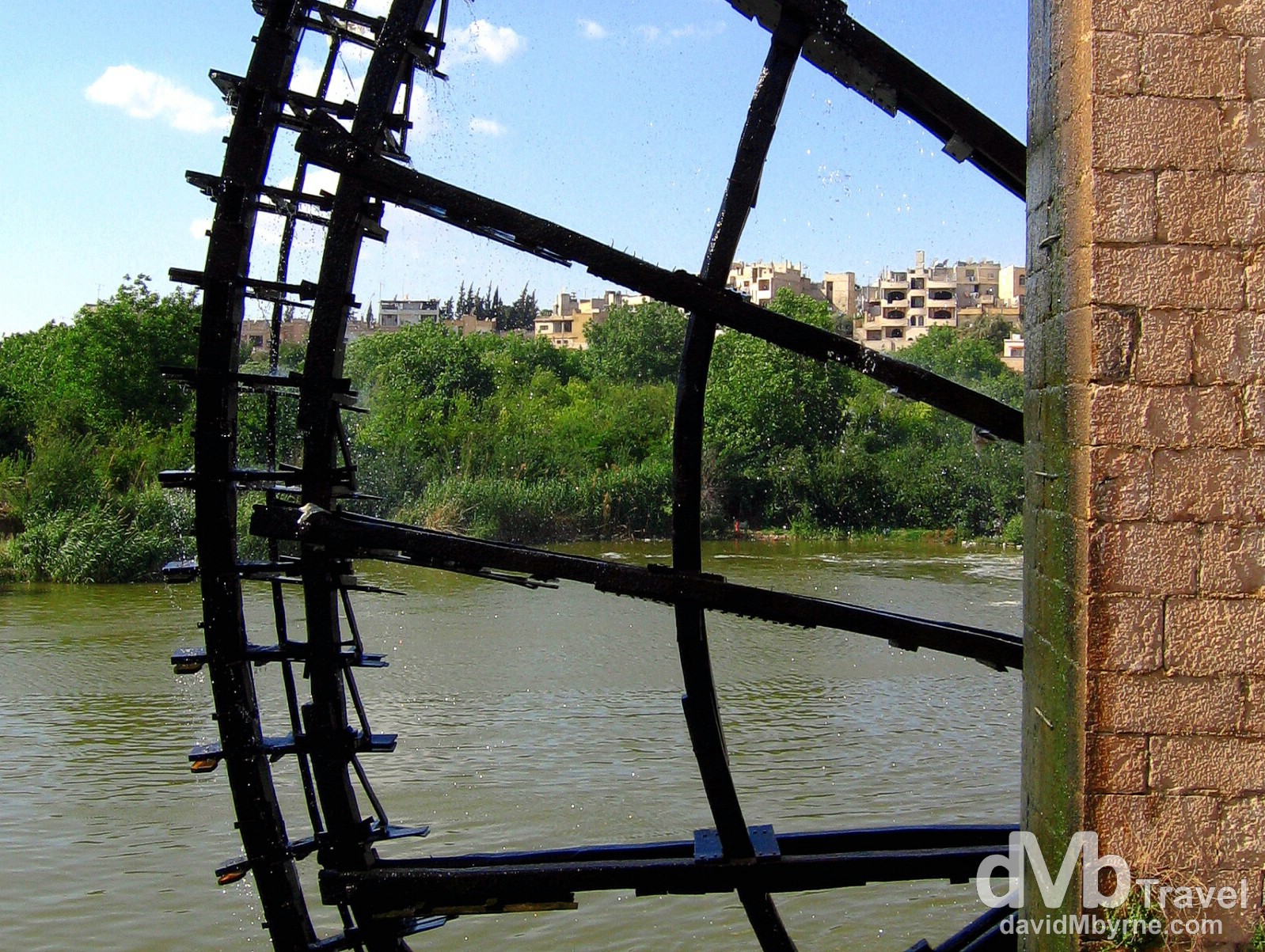
The edge of one of the 17 remaining norias (‘wheels of pots’) on the Orontes river in Hama, Syria. May 6, 2008.
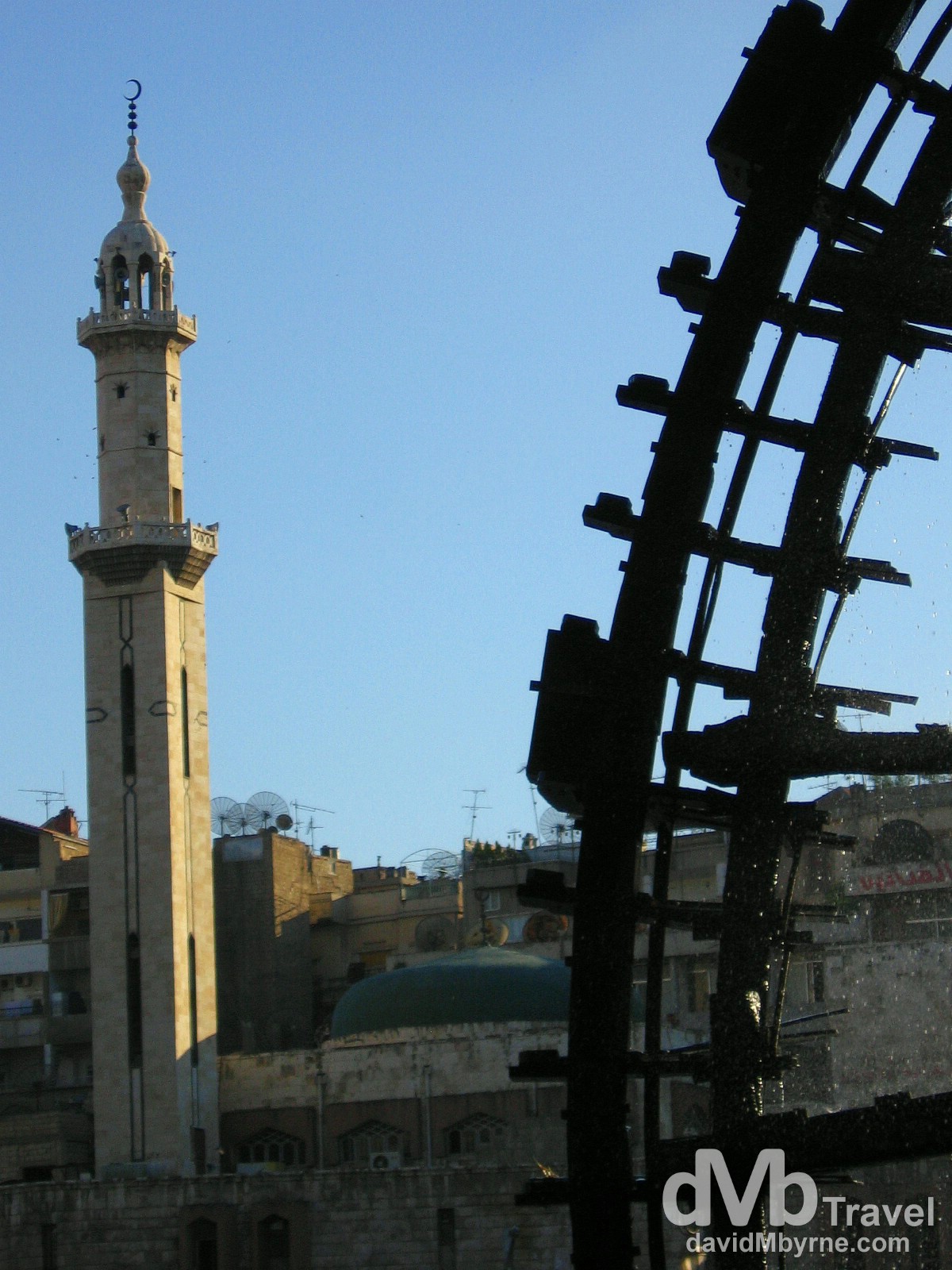
The edge of one of the 17 remaining norias (‘wheels of pots’) on the Orontes river in Hama, Syria. May 6, 2008.
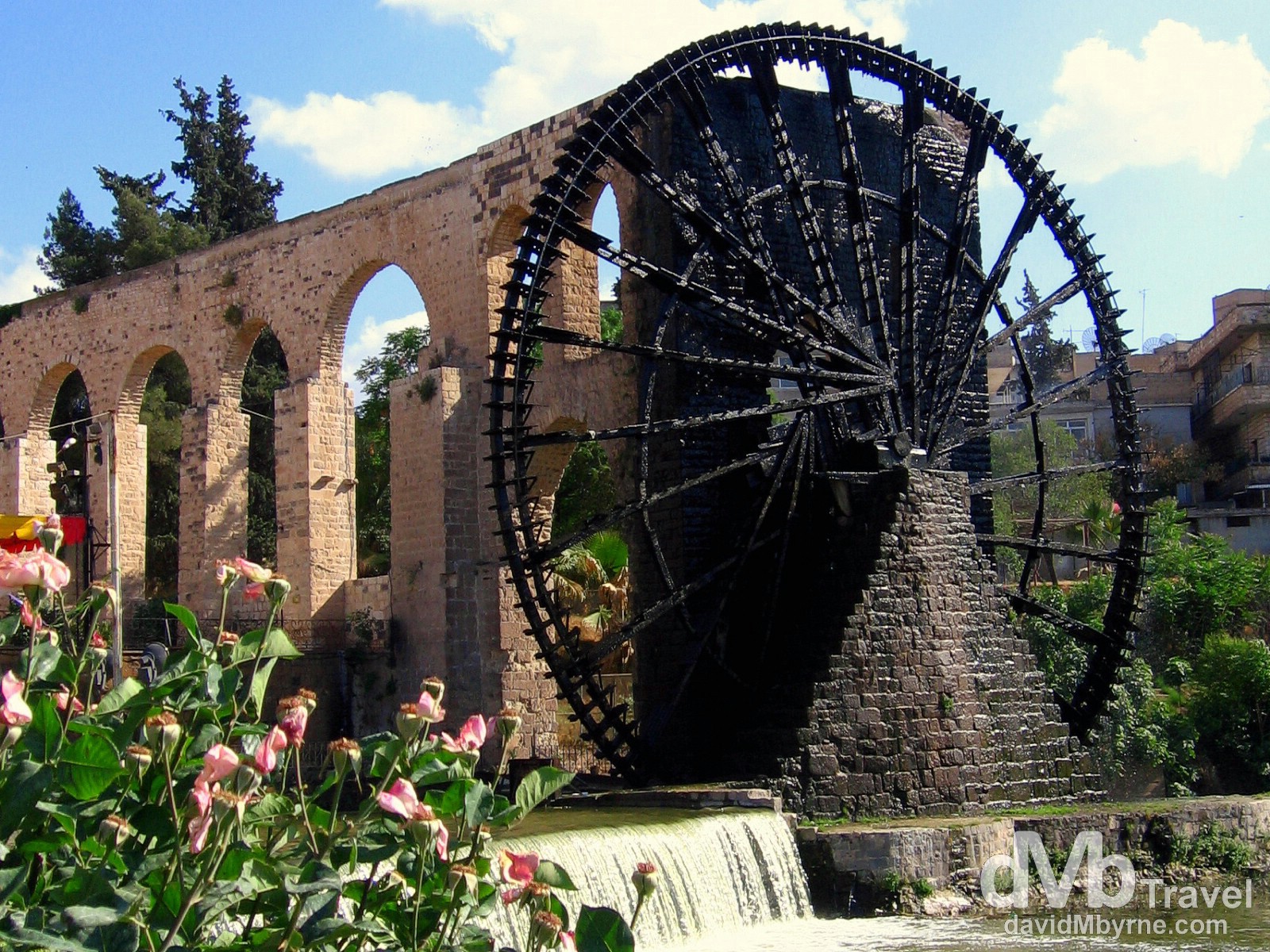
One of the 17 remaining norias (‘wheels of pots’) on the Orontes river in Hama, Syria. May 6, 2008.
The city of Hama became one of the main opposition centres in the early days of the civil war, ensuring its status as one of the war’s main arenas. It’s present condition is hard to verify.
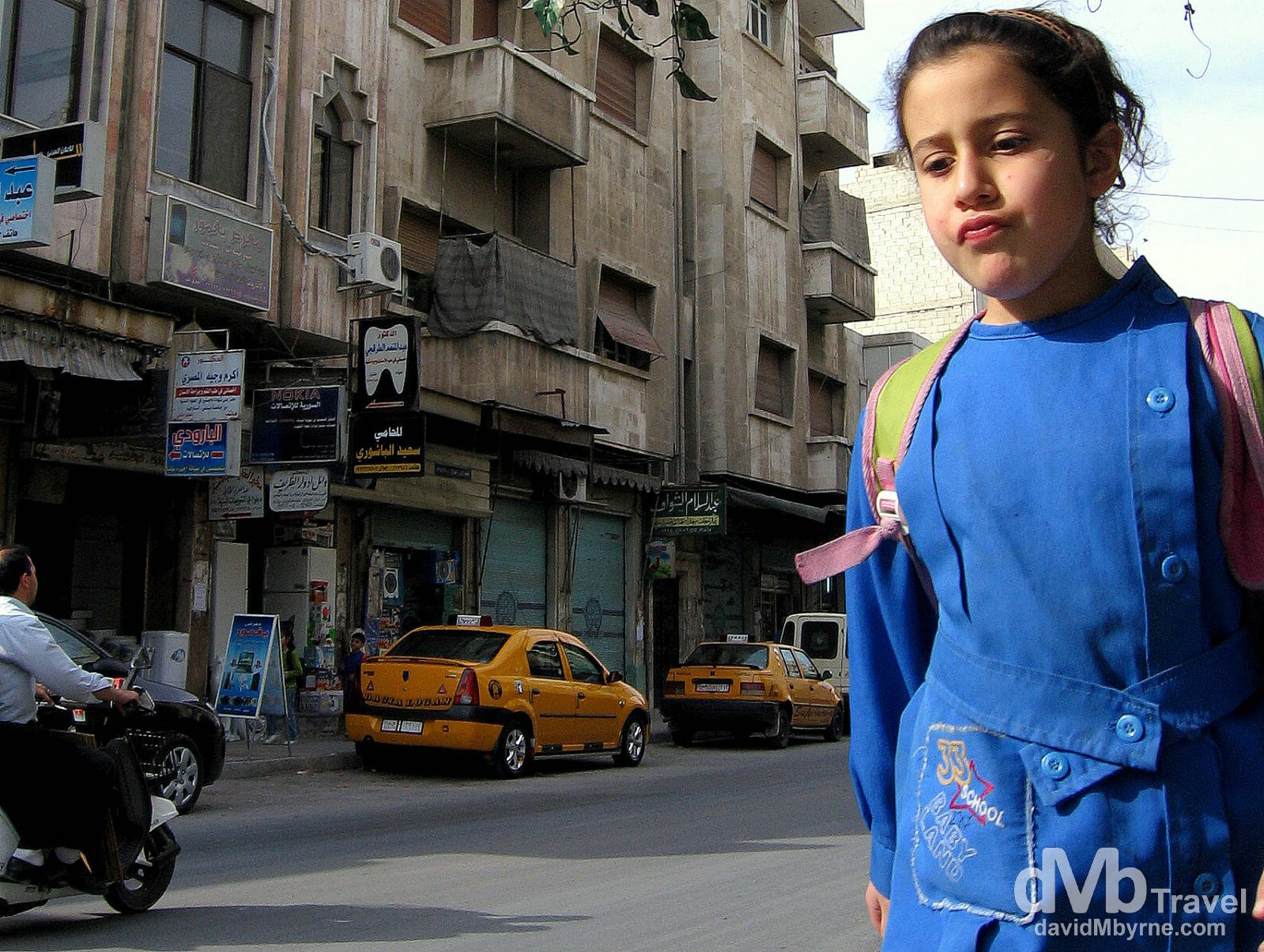
On the streets of Hama, Syria. May 7, 2008.
Damascus
An ancient city, widely regarded as the world’s oldest, Damascus is Syria’s capital. According to the New Testament, the Apostle Paul (then known as Saul) underwent a dramatic conversion on the road to Damascus.
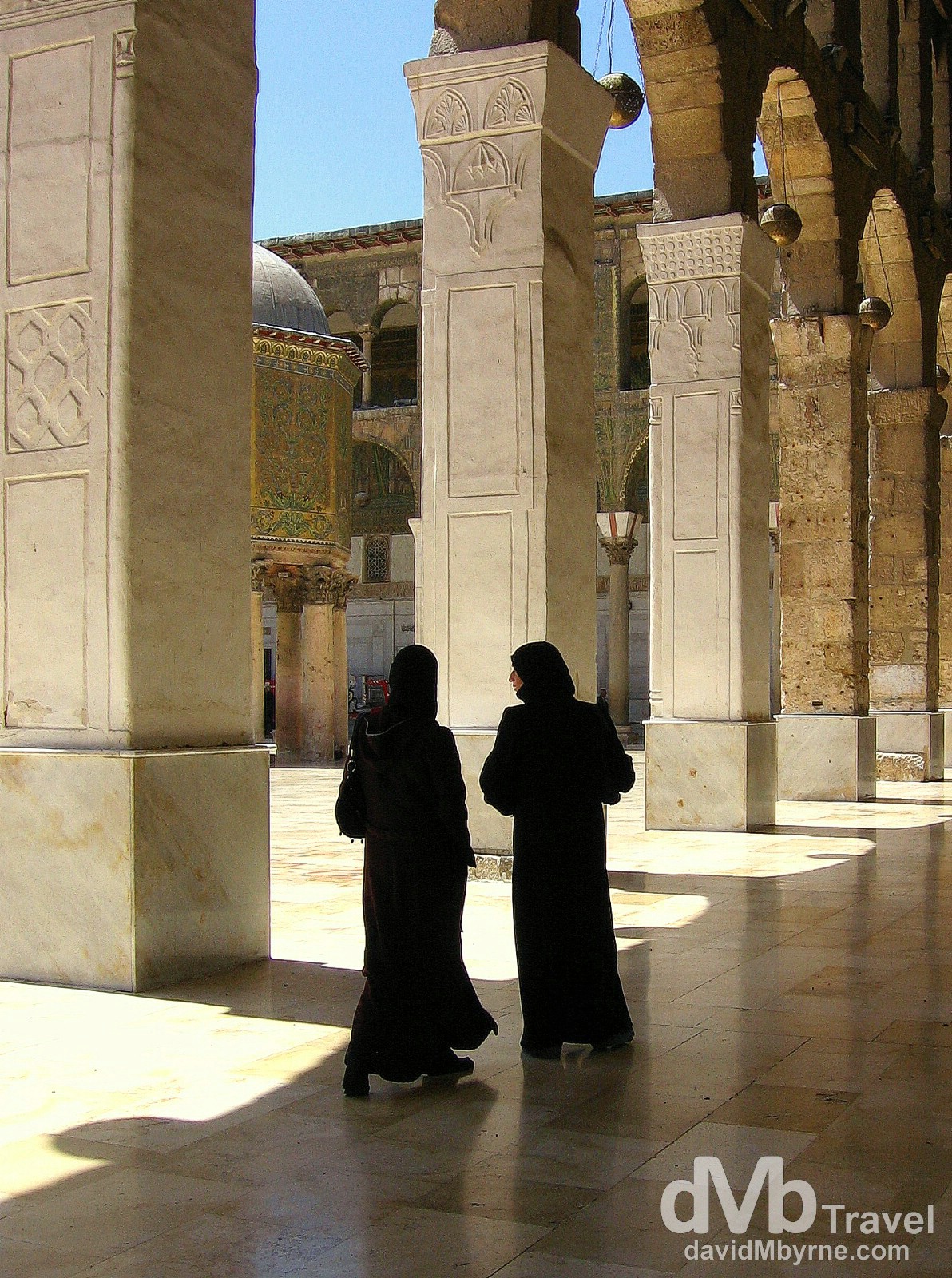
Two visitors in the courtyard of the Umayyad Mosque, a.k.a. The Great Mosque of Damascus, in Damascus, Syria. May 5, 2008.
The Umayyad Mosque is one of the largest and oldest mosques in the world. It was built after the Arab conquest of Damascus (circa 630) on the site of a Christian basilica dedicated to John the Baptist, a basilica built circa 310 during the reign of the Roman emperor Constantine I. The mosque holds a shrine which still today contains the head of John the Baptist, honored as a prophet by both Christians and Muslims alike. In 2001 Pope John Paul II visited the mosque, primarily to visit the relics of John the Baptist. It was the first time a Pope paid a visit to a mosque. I spent a few hours sitting on the edge of mosque’s gleaming marble courtyard watching the peaceful world go by. It was an almost hypnotic experience. Reports abound of the destruction of the similarly titled & UNESCO-listed mosque – along with its 45 metre, 923-year-old minaret – in Aleppo but it’s hard to find any information on the present condition of this mosque in Damascus.
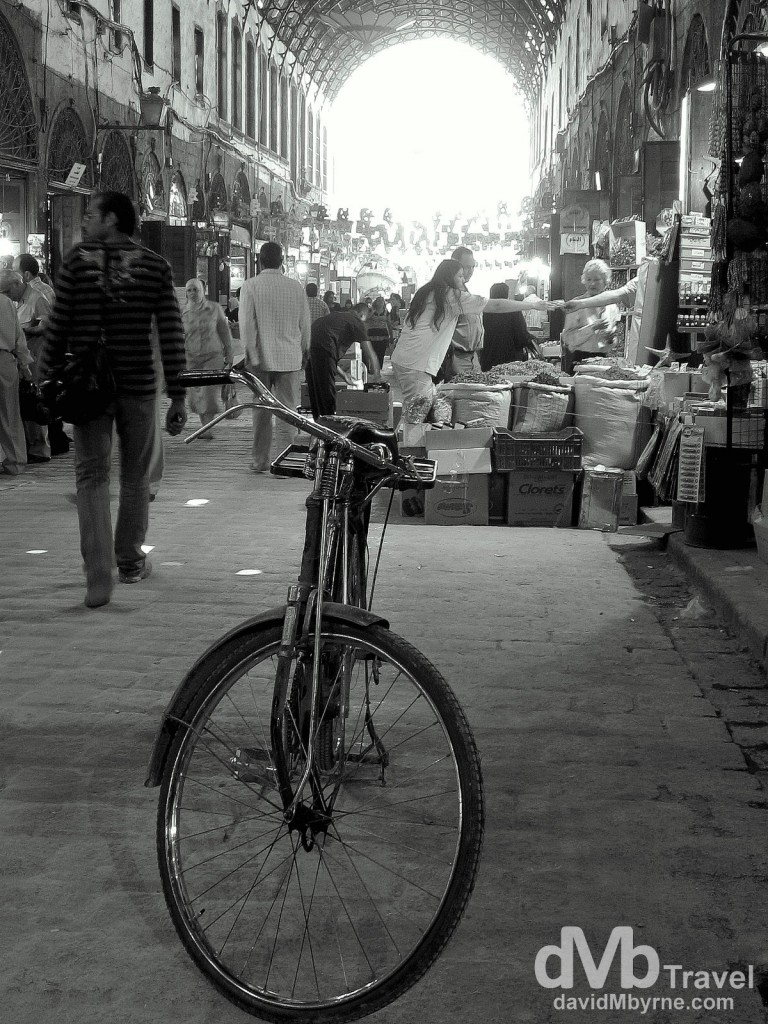
Al-Hamidiyah souq, Damascus, Syria. May 4, 2008.
